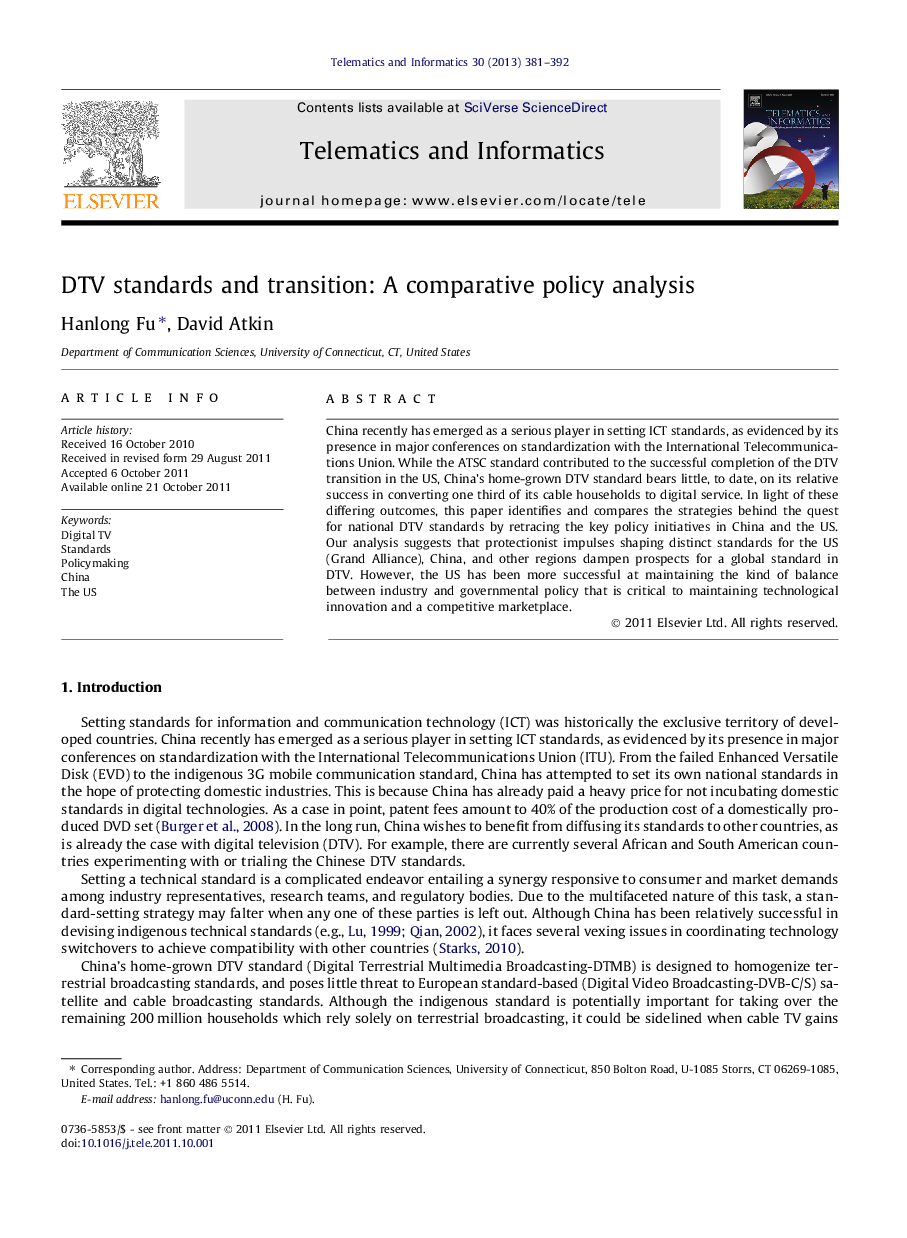| Article ID | Journal | Published Year | Pages | File Type |
|---|---|---|---|---|
| 464462 | Telematics and Informatics | 2013 | 12 Pages |
China recently has emerged as a serious player in setting ICT standards, as evidenced by its presence in major conferences on standardization with the International Telecommunications Union. While the ATSC standard contributed to the successful completion of the DTV transition in the US, China’s home-grown DTV standard bears little, to date, on its relative success in converting one third of its cable households to digital service. In light of these differing outcomes, this paper identifies and compares the strategies behind the quest for national DTV standards by retracing the key policy initiatives in China and the US. Our analysis suggests that protectionist impulses shaping distinct standards for the US (Grand Alliance), China, and other regions dampen prospects for a global standard in DTV. However, the US has been more successful at maintaining the kind of balance between industry and governmental policy that is critical to maintaining technological innovation and a competitive marketplace.
► China’s home-grown DTV standard bears little on her success in digital conversion. ► The US has been able to maintain a balance between industry and government policy. ► The strategies in DTV transition reflect respective decision-making structures. ► Achieving a state of equipoise is critical to maintain competitive marketplace.
